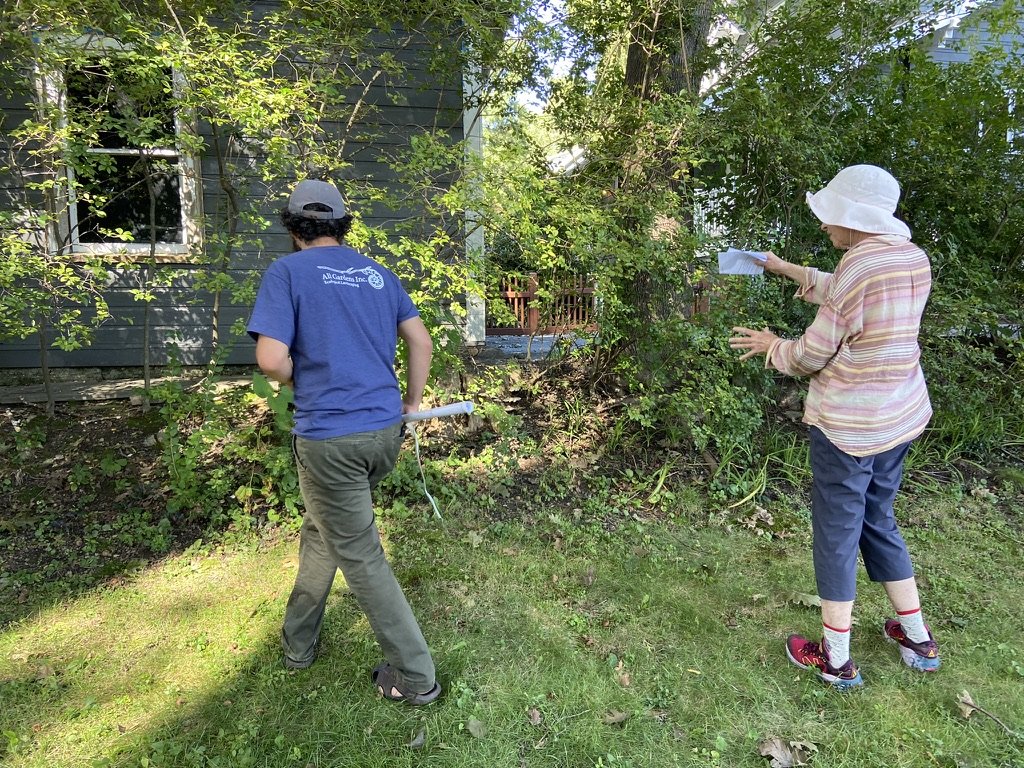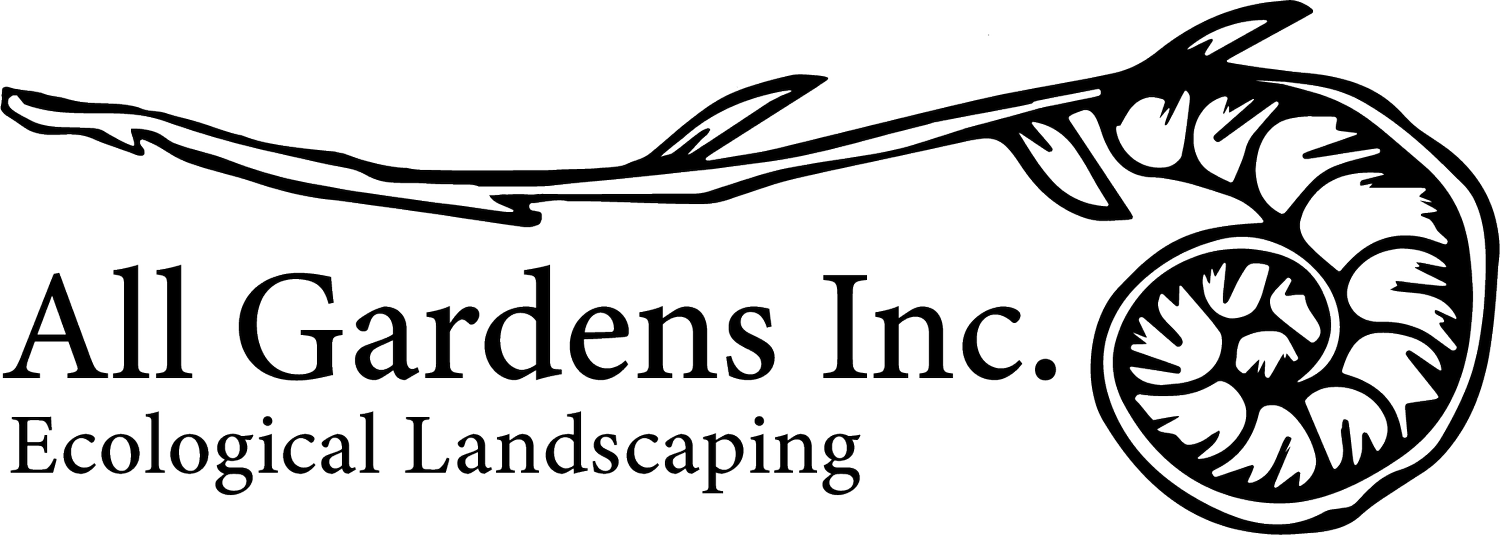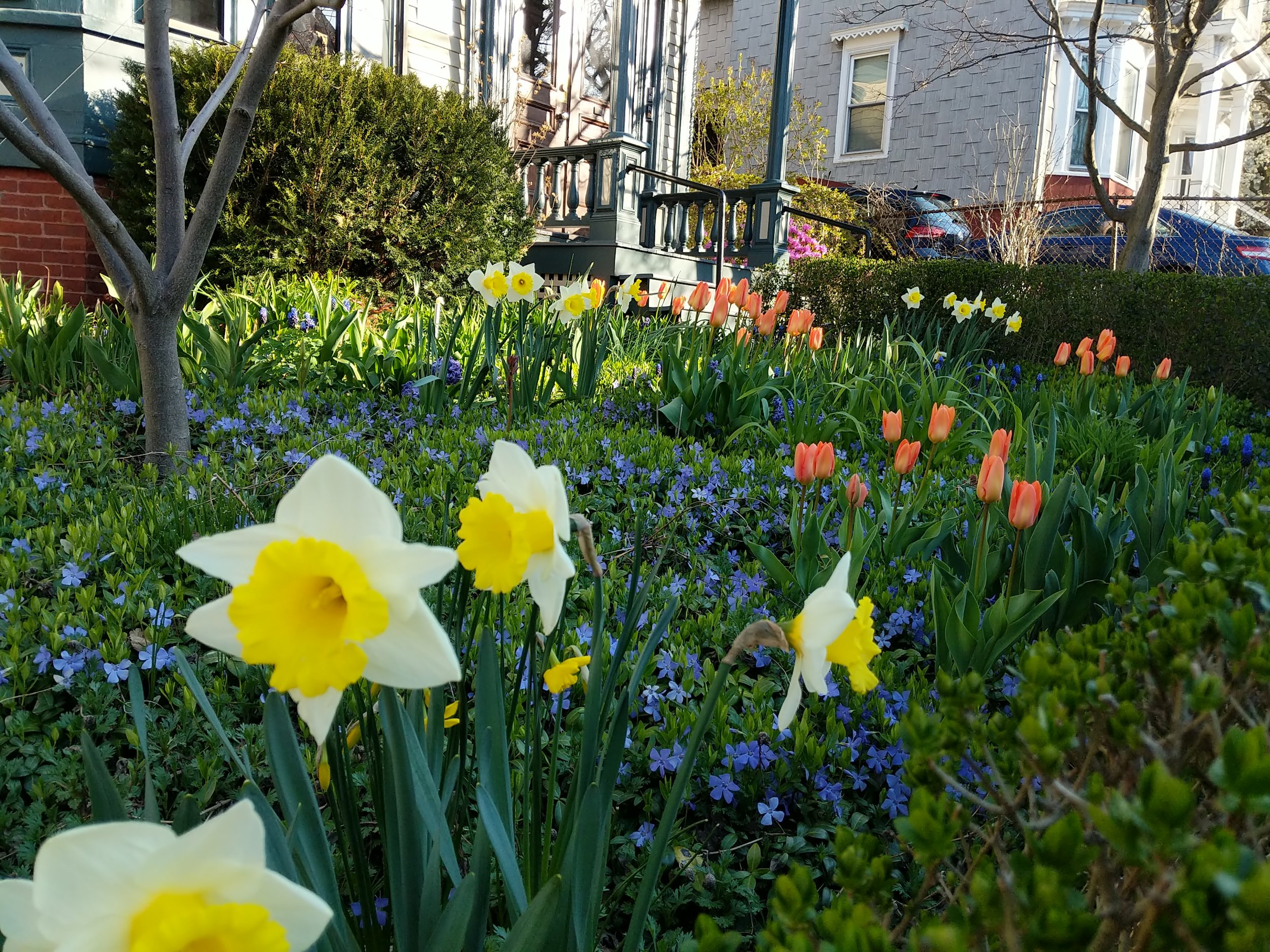Planting
Natives
As native plant enthusiasts, we endeavor to use perennials, shrubs, and trees with origins in the northeast and United States as much as possible.
Adapted to the local environment, natives…
● Require less: Properly matched to site conditions, they don’t need tons of water, pruning, or any fertilizers or chemicals.
● Are more resilient: Better equipped to withstand extreme weather events and infestations/browsing.
● Bolster biodiversity: Provide critical nesting habitat and food for local pollinators and wildlife.
● Improve soil: Help build soil structure and promote nutrient cycling, which in turn reduces erosion and contributes to ecosystem health.
● Look Beautiful: Offer a diversity of color, texture, and form—there is a native for almost every garden application.
Some of our favorite natives:
Butterfly Weed
(Asclepias tuberosa)
Christmas Fern
(Polystichum acrostichoides)
Amsonia
(Amsonia tabernaemontana)
Witch Hazel
(Hamamelis virginiana)
Trees
Trees are a foundational and lasting part of the landscape, and the correct selection of varieties is essential. Many factors need to be considered—growth rate and habit, mature size, light and soil conditions, and water requirements.
We tailor our tree planting and design services to your site and vision. Once settled on a species, a good specimen of the right size must be sourced, transported, and properly planted. We take tree planting very seriously and consider it one of the most important things we do!
There are countless benefits to planting trees:
Property Value. Trees add beauty and visual appeal; studies show they can increase your property value by as much as 15%.
Energy Savings. Properly cited, trees will cool your home (and neighborhood), reducing the need for air conditioning.
Climate Friendly. Trees sequester carbon, slowing the rate of climate change.
Biodiversity Boosters. Trees provide critical habitat and food for an abundance of wildlife, including birds and pollinators.
Air-Water-Soil Improvements. Trees remove air pollutants, filter stormwater runoff, ease flooding and erosion, and improve soil quality.
Quality of Life. Trees provide shade, noise reduction, privacy, and best of all: space for relaxation and recreation activities.
Native trees are our specialty. Here are a few we like to plant:
Eastern Redbud
(Cercis canadensis)
Swamp White Oak
(Quercus bicolor)
Eastern Serviceberry
(Amelanchier canadensis)
American Fringe Tree
(Chionanthus virginicus)
Habitat Gardens
We believe gardens designed to provide habitat have the capacity to bring about positive environmental change.
Taken collectively, ecologically-minded gardens can even slow the rate of biodiversity loss and climate change. This is why we at All Gardens design and manage landscapes inspired by natural communities and habitat types whenever possible—even small urban properties count.
Start today by replacing some of your lawn, which has little ecological benefit, with a vibrant habitat garden. Though their look and plant composition can vary, habitat gardens share a common set of goals & objectives:
Food & Water. Select plant species provide berries, nuts, and seeds. Consider letting the caterpillars eat your plants. Provide sources of water, even a bird bath.
Shelter & Nesting Sites. Incorporate trees, shrubs, perennials, and brush piles that give wildlife places to hide and nest, including thickets, logs, and tree cavities.
Diverse Natives. Use a diversity of native plants and take cues from local ecosystems: associate the same plant species and arrange them in similar patterns and layers.
Keep Materials. Leave the leaves, sticks, and needles—they are free mulch and overwintering sites.
Minimize Intervention. Think twice before cutting, digging, turning, and tidying up. Use less water and go chemical-free.
Allow Change. Plant communities are dynamic, enjoy as they respond and adapt over time.
A few garden habitat types we commonly create:
Meadow
Woodland
Maritime
Spring Bulbs
Spring-blooming bulbs provide a welcome bit of colorful cheer after a long New England winter, when most other plants are just emerging.
At All Gardens, we carefully select bulbs to create a vibrant spring display that evolves year after year. We blend classic favorites with unique varieties to diversify your garden with an array of colors, sizes, and textures. Contact us now to plan your spring garden!
Containers
Seasonal containers are an easy way to freshen up your property, adding new life and visual interest.
The All Gardens team enjoys the creative expression that comes along with container design. Each season we swap out plants and decorative elements for our clients, experimenting with new combinations and styles in keeping with the surrounding landscape.
Pretty and practical, container are:
Portable: Move your containers around your property to fill in empty, boring, or transitional spaces.
Quality Controlled: Grow in areas where the soil is poor—compacted, polluted, or otherwise unable to support edibles or decorative plants.
Space Optimizers: Maximize your growing space by growing vertically using tiered planters, hanging baskets or other types of vertical planters.
Eco-friendly: Adding plants to the built environment—entryways, patios, decks, balconies, driveways, etc.—cools the urban environment, captures rainfall, and provides food for pollinators.


























